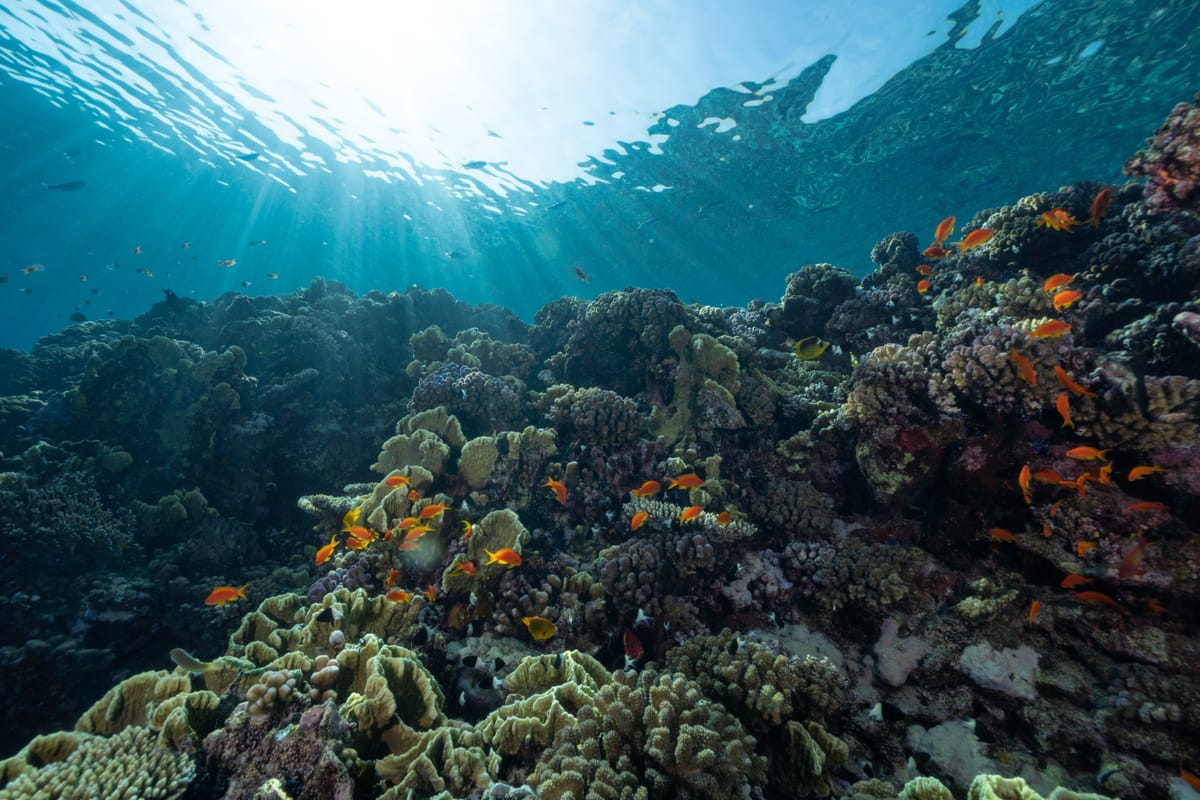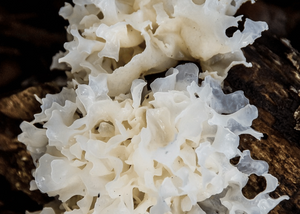Marine collagen has become a buzzword in the health and beauty industry, known for its purported benefits for skin, hair, and overall wellness. However, many consumers are taken aback by its price tag. In this comprehensive article, we'll dive into the reasons behind the high cost of marine collagen and what makes it stand out in the market.
Key Takeaways:
- Marine collagen is a high-quality protein source derived from fish, which is more expensive due to sustainable sourcing and extraction processes.
- The benefits of marine collagen for skin health and anti-ageing contribute to its high demand and price.
- Advanced hydrolyzation techniques used to improve bioavailability also add to the cost of marine collagen supplements.
What is Marine Collagen?
Marine collagen is a type of protein derived from the skin, bones, and scales of fish. It's a fibrous protein that provides strength and elasticity to the skin, and it's known for being more easily absorbed by the body compared to other types of collagen. This bioavailability is one of the reasons why marine collagen is sought after, especially in the beauty and health industries.
The process of extracting marine collagen is meticulous and requires specific technology. The collagen must be hydrolyzed, which means it's broken down into smaller peptides that are easier for the body to absorb. This process is not only time-consuming but also requires specialized equipment, contributing to the higher cost of the end product.

Health Benefits Backed by Research
Numerous studies have highlighted the health benefits of marine collagen, from improving skin elasticity and hydration to supporting joint health and bone strength. These benefits are backed by scientific research, which adds credibility and value to marine collagen supplements.
Investment in research and development to validate health claims is costly, but companies need to differentiate their products in a crowded market. The cost of conducting these studies often influences the final price of marine collagen supplements.
Sustainable Sourcing Matters
One of the primary factors contributing to the cost of marine collagen is the sustainable sourcing of raw materials. Ethical fishing practices and the use of environmentally friendly methods to harvest fish for collagen production are essential to prevent overfishing and damage to marine ecosystems. These practices often involve regulations and certifications that can increase the cost of sourcing.
Moreover, the preference for wild-caught fish, which are considered to be of higher quality and less exposed to pollutants than farmed fish, also drives up the price. Wild-caught sourcing must comply with strict fishing quotas and seasons, which limits availability and increases demand, further inflating the cost.
The Extraction and Purification Process
The extraction and purification process of marine collagen is complex and requires a high level of precision. The collagen must be carefully separated from other components of the fish without damaging its structure. This involves several stages of filtration and purification to ensure that the final product is free of contaminants and allergens.
These processes are carried out in controlled environments and require the use of high-quality materials and equipment. The stringent quality control measures necessary to produce pure marine collagen add to the overall production costs, making the product more expensive.
Bioavailability and Absorption
Marine collagen's high bioavailability is one of its most touted benefits. The smaller peptides resulting from the hydrolyzation process are more easily absorbed by the body, making marine collagen highly effective. However, the technology and research required to achieve this level of bioavailability are costly.
The hydrolyzation process not only makes the collagen more digestible but also preserves its amino acid profile, which is essential for the body's natural production of collagen. This effectiveness in absorption and utilization by the body justifies the higher price point for many consumers.
The Role of Hydrolyzation
Hydrolyzation is a critical step in the production of marine collagen that impacts its cost. This process involves breaking down the collagen's molecular bonds, transforming it into smaller peptides. The hydrolyzation must be carefully controlled to ensure the integrity of the amino acids is maintained, which requires advanced technology and expertise.
The equipment used for hydrolyzation is specialized and expensive, and the process itself consumes a significant amount of time and energy. These factors contribute to the higher production costs associated with marine collagen supplements.

Demand in the Beauty and Health Industries
The beauty and health industries have seen a surge in demand for marine collagen due to its potential anti-aging and skin health benefits. As a key ingredient in many premium skincare products and supplements, marine collagen's association with luxury and effectiveness allows for a higher price point.
This demand is driven by a growing consumer awareness of the benefits of collagen for skin elasticity, hydration, and wrinkle reduction. As more people seek out these benefits, the market for marine collagen continues to expand, supporting its premium pricing.
The Quality of Ingredients
The quality of the ingredients used in marine collagen supplements is paramount. High-quality fish, free from heavy metals and other contaminants, are essential for a pure and effective product. The selection of these quality ingredients, often sourced from pristine waters, adds to the cost.
Additionally, many marine collagen products are fortified with other beneficial ingredients, such as vitamins and minerals, to enhance their health benefits. The inclusion of these high-quality additives further increases the production costs.
Packaging and Branding
The packaging and branding of marine collagen products also play a role in their cost. Many brands invest in attractive, durable packaging that preserves the quality of the collagen powder or capsules. This packaging is designed to protect the product from moisture, light, and air, all of which can degrade the collagen peptides.
Branding efforts, including marketing and advertising, also contribute to the overall cost of marine collagen. Brands that position themselves as premium or luxury often spend more on these efforts to create a strong brand image and justify their higher prices.
Research and Development
Significant investment in research and development (R&D) is required to produce high-quality marine collagen. Companies spend considerable resources on scientific studies to prove the efficacy of their products and to innovate new extraction and processing methods.
This R&D is essential for companies to stay competitive in the market and to provide consumers with the best possible product. However, the costs associated with these activities are often reflected in the final price of marine collagen supplements.
The Environmental Impact
The environmental impact of marine collagen production is a concern for both consumers and manufacturers. Sustainable practices, such as sourcing from fisheries that follow environmental guidelines and using eco-friendly packaging, are becoming increasingly important.
These environmentally conscious practices often come with higher operational costs, but they are essential for the long-term sustainability of marine collagen production. Consumers who value these practices are typically willing to pay a premium for products that align with their environmental values.
The Future of Marine Collagen
The marine collagen market is expected to continue growing, with innovations in production and sustainability practices potentially influencing costs. As technology improves and becomes more efficient, there may be opportunities for the price of marine collagen to decrease, making it more accessible to a broader audience.
However, the commitment to quality, sustainability, and research is likely to remain, ensuring that marine collagen continues to be a high-value product in the health and beauty industries.
Ultimately, marine collagen's high price tag can be attributed to a range of factors, including sustainable sourcing, complex extraction processes, high bioavailability, research-backed health benefits, stringent quality standards, and effective marketing and branding. While it is more expensive than other collagen sources, many consumers find the potential health benefits and ethical considerations justify the cost. As the market evolves, we may see changes in pricing, but the value placed on quality and sustainability is likely to remain a constant driver behind the price of marine collagen.
FAQs
Is marine collagen worth the extra cost compared to other types of collagen?
For many consumers, the answer is yes. Marine collagen's high bioavailability, potential health benefits, and sustainable sourcing practices make it a valuable investment for those prioritizing these factors in their supplement choices.
Can I find affordable marine collagen?
While marine collagen is generally more expensive, some brands offer it at a lower price point. However, it's important to research the sourcing, production processes, and ingredient quality to ensure you're still getting a good product.
Are there any vegan alternatives to marine collagen that are less expensive?
Vegan collagen builders are available and can be less expensive. However, they work differently by providing the body with the necessary components to produce its collagen, rather than supplying collagen directly. The effectiveness of these alternatives can vary and may not provide the same benefits as marine collagen.













Member discussion